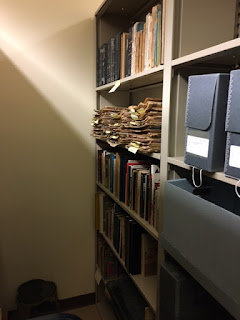Course Reflection
The course was enriching because there
was information I was exposed to that I would not normally have known if it was
not for this class. For instance, in the book Content Strategy for the Web, I learned a new term and job position
called content strategist. This person’s specialty is to know the information,
but also to know how to persuade the content to other who may be unfamiliar
with the product or message. In the same book, I learned what magic layer means
and its purpose. Magic Layer seems as though it comes after the brainstorming
process and then the person starts to apply the ideas. This layer is feared
from many people because it tests their creativity and challenges them to not
rely on themselves rather executing the impossible with collaborators. I could
relate the challenge this process called the magic layer can be, especially when
I began my rhetorical analysis and finding content for the webpage contribution.
I needed to allow people to look at my work so I could include any detail I may
have missed. In the book Spreadable
Media, I learned that participatory cultural practices transform
transnational media flow through what users watch on social media. In this
case, society contributes the success of others in regards to exposing them to
the world.
Even though the class was not necessarily
intended to be face-to-face, this type of interaction exposed me to more honest
conversations. I was able to remember and learn the information because of the
structure of the class. The structure was less lecture-based and more
interactive. I felt more connected and involved than I would probably have had
if I took the class online. My attention was hooked from the beginning of the
semester where our class discussed the social apps and different digital
writing environments. Many of them I never heard from such as Yik-Yak, Vlogs
and Redit. I learned from my peers in class and listening what they had to say.
I am use to being around with other historians in classroom settings so it was
refreshing to be with people from different disciplines in this class. When our
class looked at examples of websites doing less Sebastian Tamayo and other
classmates mentioned important critics on how to improve websites’ design. One
comment Sebastian mentioned was users usually are directed to the left-hand
corner of any webpage and I would have never known that, but his comment made
perfect sense. His comment influenced how I thought the design of our webpage
contribution would look like by placing the logo and the tabs at upper left
side of the page.
Our class had collaboration when we
peer-reviewed each other’s rhetorical analysis. Even though we may think that
technology and social media can bring solidary, in that moment discussing new
ideas to write on our choice of digital writing environment we were collaborating
and listening each other’s opinions and knowledge. These interdisciplinary
interactions are experiences that will help me if I want to pursue a digital
humanities job and a skill I need if I ever want to be a content strategist, as
discussed in the book Content Strategy for
the web. Not only was I learning to build architectures of participation on
social media, but also I was building one in class among my peers when we had
discussions and when working on our webpage project. Having this course
face-to-face executed what really digital humanities is all about. Digital
humanities integrate the digital applications with the traditional teachings.
It does not replace one with the other.



Comments
Post a Comment